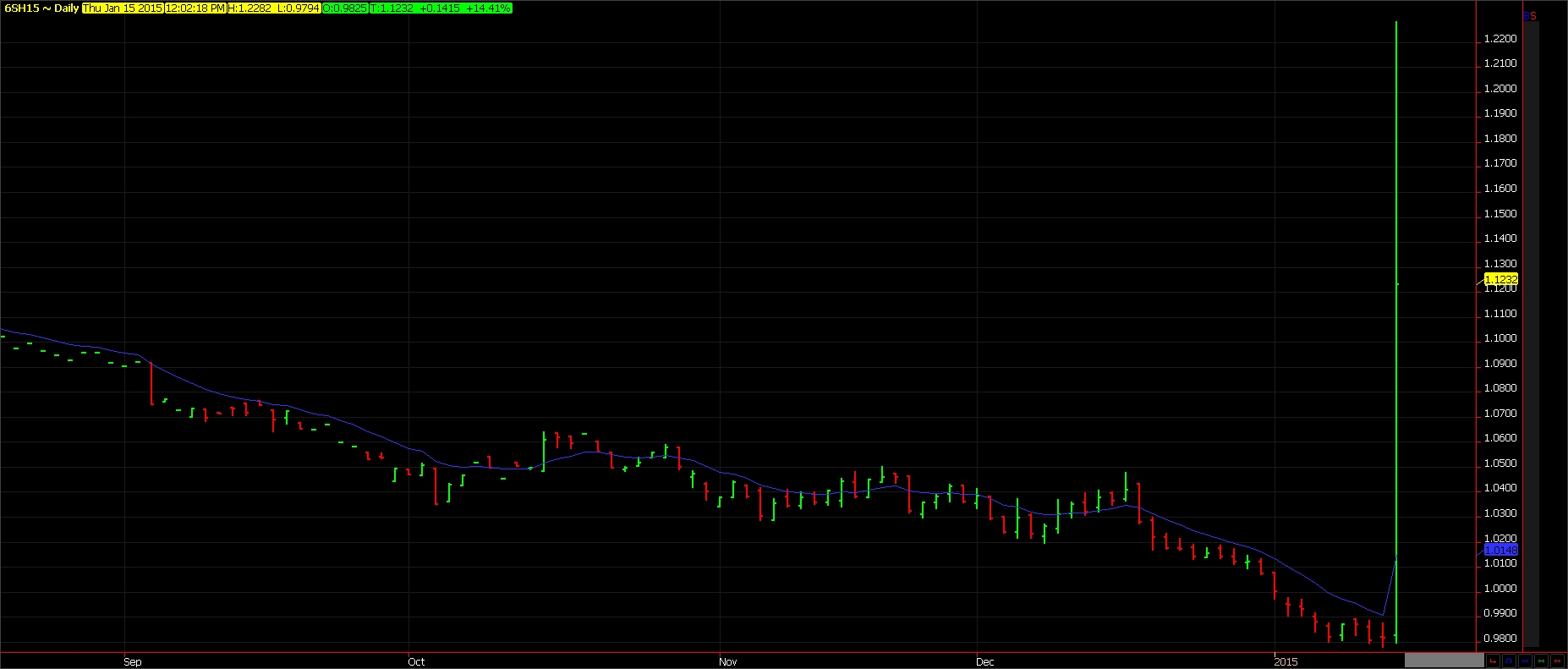January 15th, 2015: The Swiss Franc gained 30% overnight against the Euro, and was up as much as 39% against both the euro and the dollar at one point. This is a VERY large move in the currencies sector, and not one you normally see in a globally held currency like the Swiss Franc. So what exactly happened?
The Swiss National Bank early this morning (3:30 AM CST US Time, 9:30 AM London Time) removed the exchange rate control – which imposed a maximum value of the Swiss Franc of just over 0.83 Euros since 2011 – and this has driven the Swiss Franc to almost even with the Euro Currency. The US Dollar / Swiss Franc contract rose almost 25 cents early this morning before settling around 1.13:
The Euro Currency / Swiss Franc pair traded on the CME Exchange, dropped from 1.2000 (the floor), to a low of 1.0079. The Euro Currency against the US Dollar was down close 200 points over night, with a low of 1.1574, after the announcement.
The surprise move from the Swiss National Bank comes amid expectations that the European Central Bank could launch a full-blown quantitative easing campaign next Thursday, which is expected to devalue the Euro Currency. This news will likely lead to a further depreciation of the Euro Currency against the US dollar with many predicting the pair could go as low as 1.00.
The Swiss National Bank initially adopted the exchange rate control in order to prevent global inflows to the Swiss Franc “safe-haven,” and to stop the rise of the Swiss Franc, which was crippling exports. Now, with the removal of the exchange rate control, the rise in the Swiss Franc will make exports more difficult, as Swiss goods become more expensive to the rest of Europe and the United States. Furthermore, the rise hurts Swiss tourism, as it becomes more expensive to vacation there. From the standpoint of the Swiss National Bank, the stronger Franc will make it cheaper to import from other countries, and will also stop the artificial ceiling imposed on the Franc. As monetary inflows increase to Swiss banks, it was impossible for the Swiss central bank to maintain an artificial ceiling on their currency.

